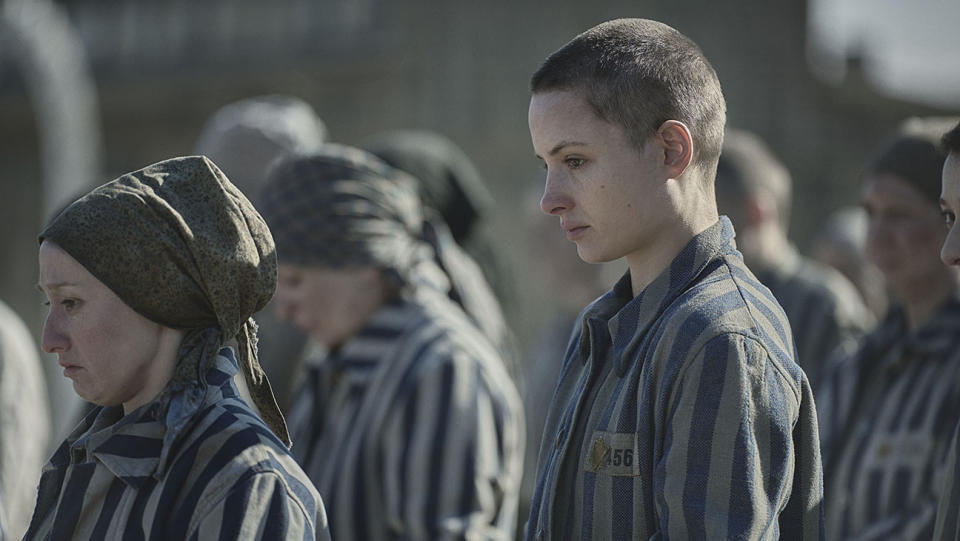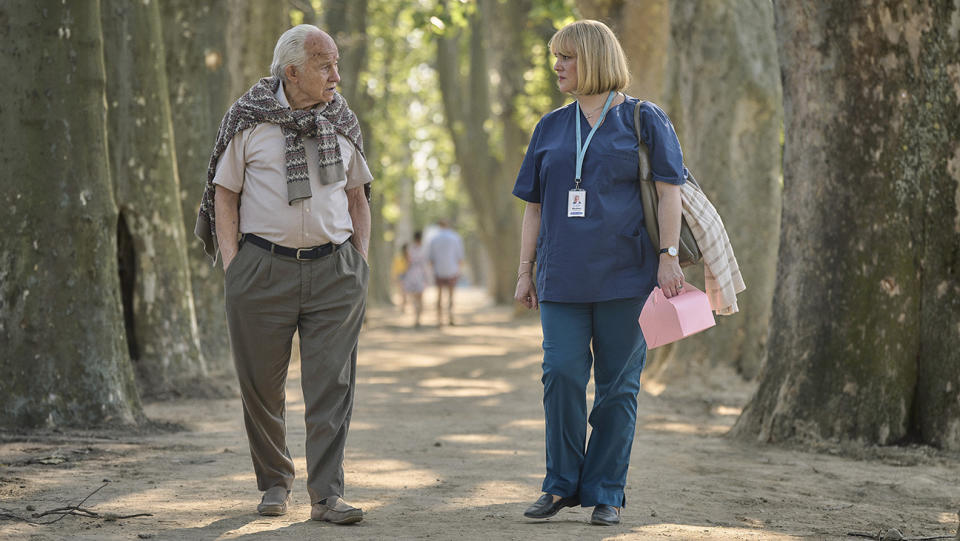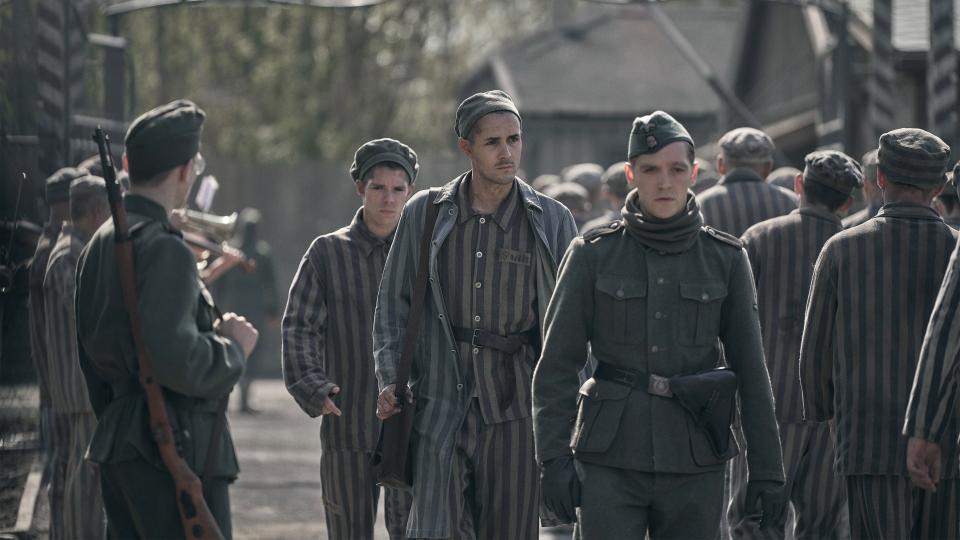How ‘Tattooist of Auschwitz’ Leads Sparked Onscreen Chemistry for Holocaust Love Story

Lali Sokolow kept a secret for 60 years before his story of love and survival in a Nazi death camp was captured in The Tattooist of Auschwitz — the novel that inspired the Peacock limited series of the same name, which released its six episodes on Thursday.
Sokolow, after reaching the Auschwitz-Birkenau concentration camp in 1942, eventually tattooed identifying serial numbers on the arms of fellow Jewish prisoners who were deemed fit to work and weren’t directed immediately to the gas chambers during the Holocaust. And collaborating with the Nazis by taking on the duties of a tattooist to stay alive caused Sokolow a life of guilt, fear and paranoia.
More from The Hollywood Reporter
But his three years in Auschwitz also gave Lali the love of his life: Gita Furman, an 18-year-old Slovakian Jewish prisoner he instantly fell for the moment he put a painful needle into her skin to imprint a five-number tattoo. “I tattooed her number on her left hand, and she tattooed her number in my heart,” Lali tells The Tattooist of Auschwitz author Heather Morris, who is played by Melanie Lynskey in the period drama.
As much as the miniseries becomes a story of survival and hope, the Tattooist of Auschwitz is also poignant love story that takes the “what if?” to the next level, as it involves two people using their survival instincts to fall in love and escape death in a Nazi camp.

This, all while Sokolow was under the close guard of Nazi SS officer and tormenter Stefan Baretzki, played by Jonas Nay, and dreading that SS officer Josef Mengele would send new arrivals his way to be tattooed. “We must keep living, whatever it takes,” a young Gita pleads to Lali in one scene during the drama, his head in her hands as they dared to risk their lives to keep their love going.
When speaking to The Hollywood Reporter, executive producer Claire Mundell — whose banner Synchronicity Films produced the series — and director Tali Shalom-Ezer recalled the endless discussions over how to strike the right tone in portraying this story of secret love in Auschwitz.
After all, early scenes where they first lock eyes — as Lali gives Gita her concentration camp tattoo — leads to other scenes where a modern-day Lali, played by Harvey Keitel, recounts everlasting love with Gita, with whom he raised a son in Australia.

Telling this Holocaust romance called for knowing what to include and what to leave out, and for the right movements and gestures on camera, explains Mundell. “You can never ever begin to portray the real place,” she says, as the original novel that inspired the limited series is a set of memories from Lali verified where possible and embellished with fiction when required.
To make the love story believable for the Peacock audience, the decision was made to allow director Shalom-Ezer to helm every episode to sustain a consistent vision and look, however draining that was emotionally and physically. “For sure, that was the most challenging thing I’ve done in my life,” Shalom-Ezer tells THR.
With the Tattooist of Auschwitz, an instant and sustained spark between the Lali and Gita characters was crucial. So fostering chemistry between Hauer-King and Próchniak was a focus from early rehearsals.
“We worked scene by scene, and in every scene we’re trying to understand what we’re telling and why it’s important to the story and what exactly we’re telling now,” Shalom-Ezer says of Hauer-King and Próchniak being able to convincingly portray a romantic connection where they become infatuated with one another.

As with any screen performance, portraying a love story in a Nazi camp called for Hauer-King and Próchniak to put their pride as artists aside and express real vulnerability. “It was a lot about our own trust with each other and, luckily, Anna and I feel fortunate to have an immediate connection and feel bonded by this huge undertaking,” Hauer-King explains.
The two leads also leaned into preciously private moments when possible in Auschwitz, where Lali could wander about as a protected tattooist. He and Gita risked death if found with one another.
Próchniak says they had to create a “safe space” on the TV set. “It was letting go of our egos and putting the story first,” she say. “What makes it unique is it’s a love story, and their decision to remain human in this factory of death and dehumanization. The fact of giving love becomes an act of defiance.”
Hauer-King agrees Shalom-Ezer succeeded in allowing them to tell a finely calibrated love story, often through a process of trial and error: “We could be vulnerable and fragile and try things and get things wrong and go to a place of extreme darkness without any judgement.”
To bolster the narrative, Lynskey appears in the series as author Morris interviewing the elder Lali – even though the novelist doesn’t appear in the original best-selling book. During select scenes in the TV drama where Lali recounts especially horrific scenes at Auschwitz, Nazi officer Baretzki (Nay), will suddenly accompany Keitel on the couch in a Melbourne apartment.
“I thought it was a really interesting way of telling the story, and investigating the ways in which our pasts and our trauma and our histories don’t ever really leave us,” Lynskey says of her character pulling from an elderly Lali his haunting memories, guilt and trauma in a bid to heal after his wife’s death.
As the timeline for the Peacock drama jumps from the 1940s Holocaust to the 2000s in Lali’s Melbourne apartment, Nay, a German actor playing a brutal and sadistic SS officer in a Nazi uniform, underlines the importance of telling the story of the Holocaust for new generations. That’s especially with the resurgence of the far right in Germany, with the rise of the controversial Alternative for Germany, or AfD, political party.
“That’s almost incomprehensible for me and I feel a responsibility to tell this story,” Nay tells THR. “It’s absolutely crucial with all the atrocities going on in the world that we spread a message of humanity and hope. As pathetic as it may sound, through the medium of film we must raise an awareness of the Holocaust that we should never ever get back to. And if we achieve that goal, it was worth it.”
The Tattooist of Auschwitz is now streaming on Peacock.
Best of The Hollywood Reporter

 Yahoo News
Yahoo News 
